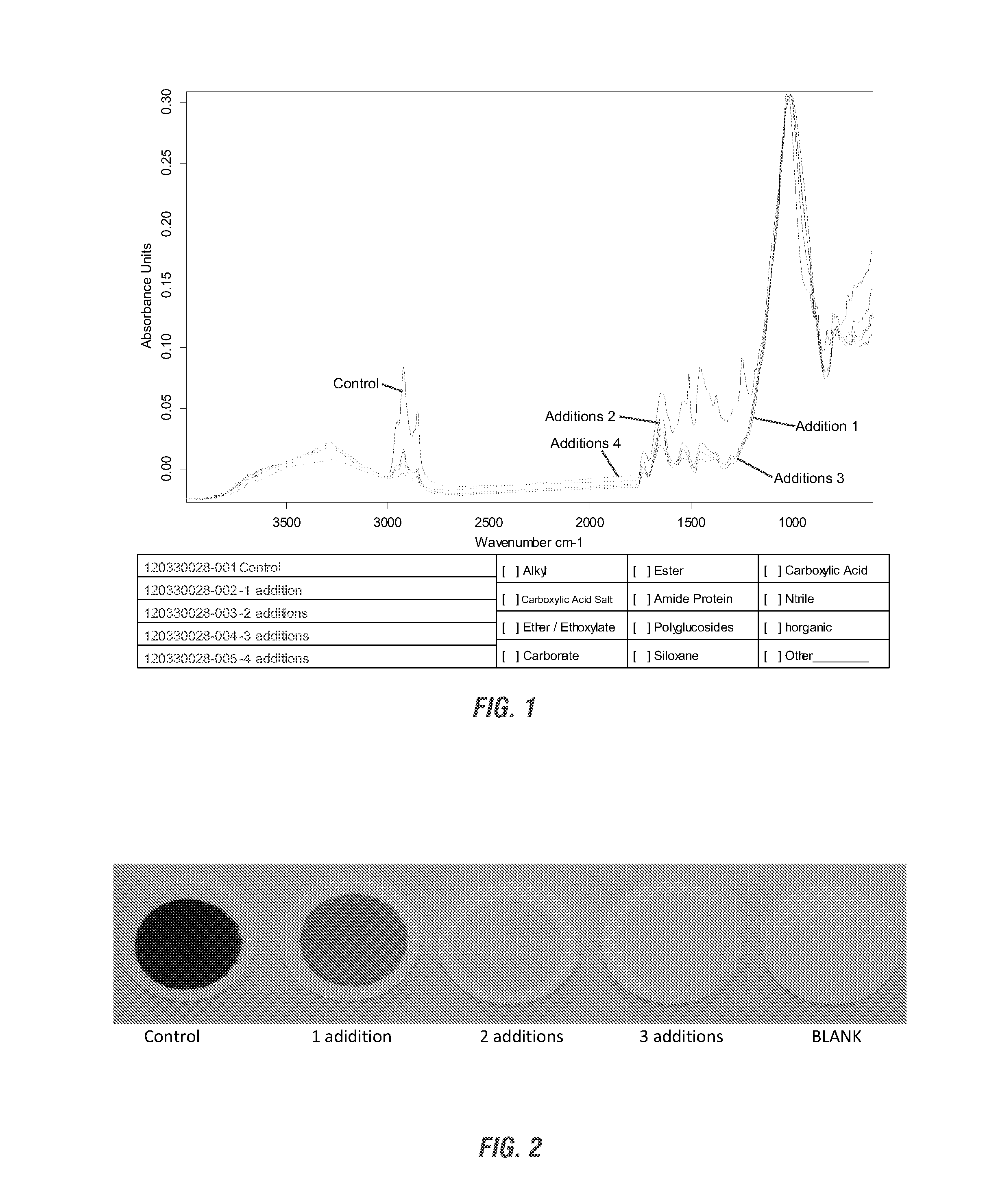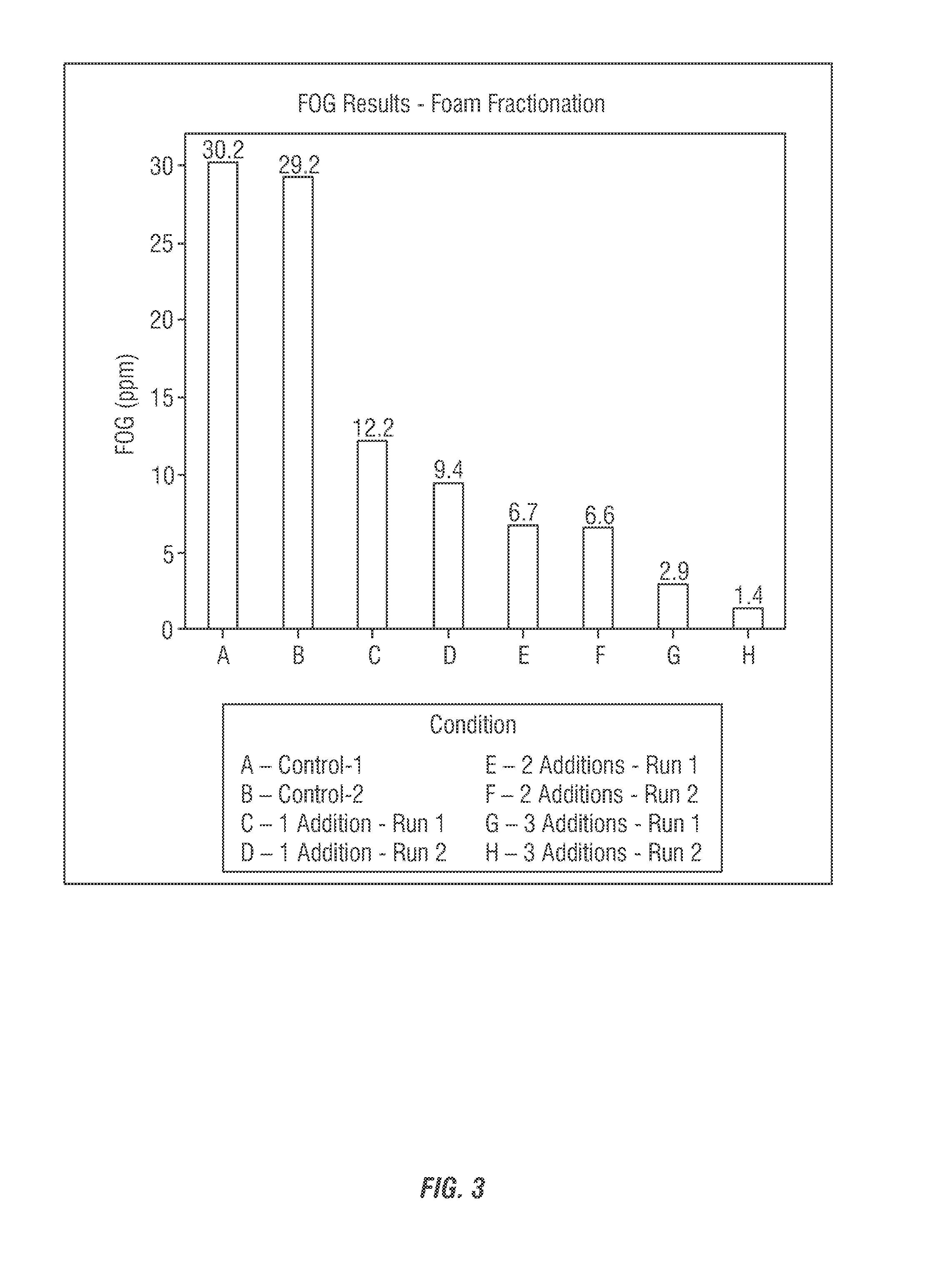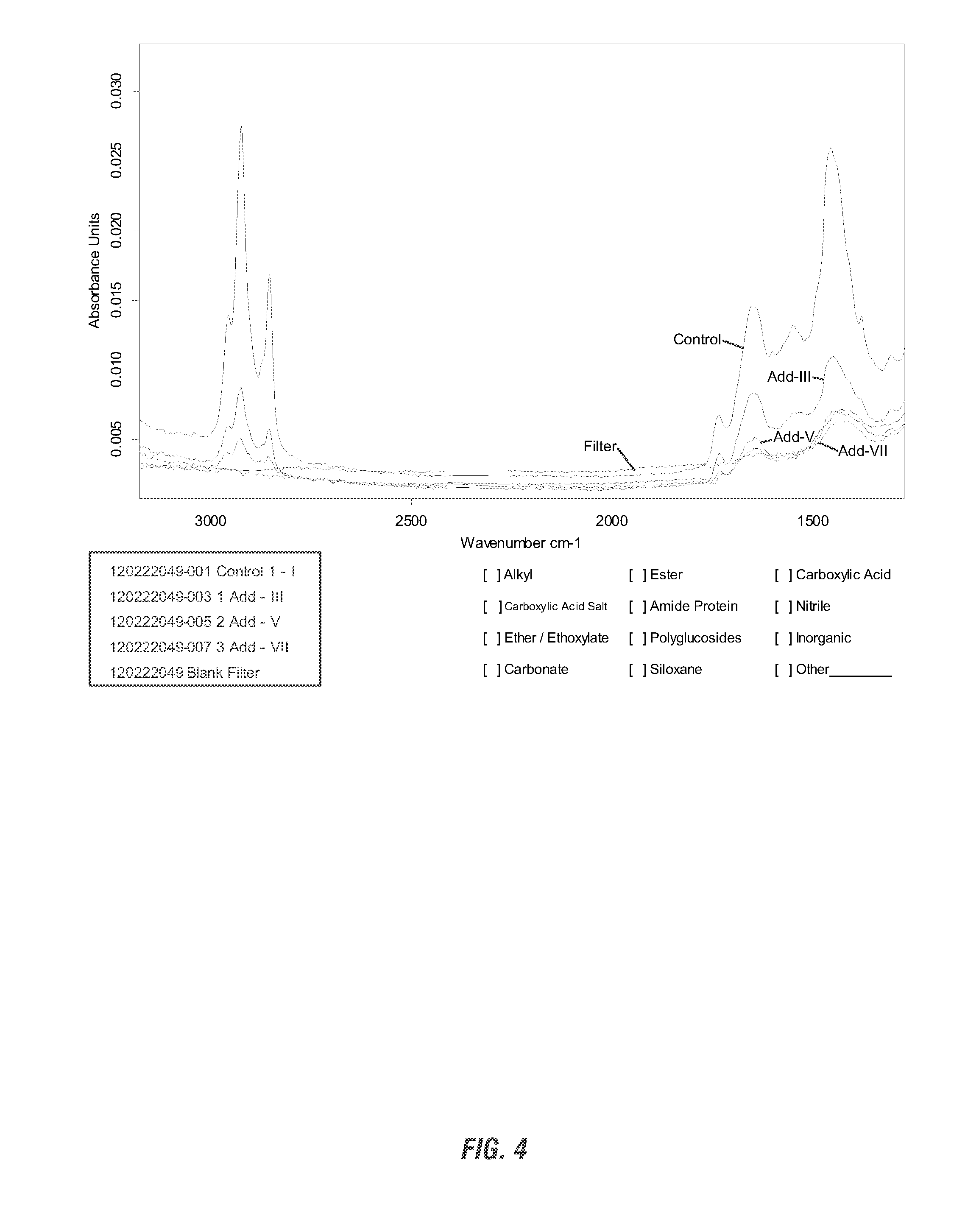Enhanced foam fractionation of oil phase from aqueous/oil mixed phase via increased viscoelasticity
a technology of oil phase and foam fractionation, which is applied in water cleaning, water softening, and separation processes, etc., can solve the problems of complex and difficult contaminant removal and difficulty in foam fractionation to date, and achieve the effect of enhancing foam fractionation of oil
- Summary
- Abstract
- Description
- Claims
- Application Information
AI Technical Summary
Benefits of technology
Problems solved by technology
Method used
Image
Examples
example 1
Test Method
Test Method #1:
[0179]This method was used in the first set of experiments and used motor oil to approximate a petroleum type oil in the fractionator.[0180]The foam fractionator was filled with 5 gpg cold water. (From its dimensions, the volume of the fractionator is approximately 36 gal.[0181]Approximately 4000 g of a saltwater-reproducing salt mix was added to achieve a salinity of 35 g / L.[0182]200 g of Holiday brand SAE 30 Heavy Duty Motor Oil was added to the top of the saltwater solution.[0183]The pump was then turned on with the air intake closed. The air intake tube was inserted into a solution containing DI water and the amount of chemical for each test. The air intake was then opened, allowing the chemical solution to be sucked into the fractionator and the air intake left open after all the solution is in the fractionator.[0184]Samples and observations were taken throughout the testing as noted for each particular test.
Test Method #2:
[0185]This method used crude ...
example 2
[0356]A set of experiments were run using the compositions of the invention. First, water samples were collected and held at 40 F post collection. The chemistry used was a 3:1 blend of polymer:surfactant according to the invention:[0357]Polymer—Acusol 820 (45 ppm)[0358]Surfactant—TMAZ 80 (15 ppm)
[0359]The composition was added every ten minutes with samples taken immediately before addition of the composition—four total additions. Sample recirculated for one minute with the composition prior to aeration (3.5 psi sparging tube aeration +Venturi).
[0360]Table A below show the reduction of total suspended solids and total dissolved solids as well as multiply charged cations at 0 through 4 additions of the composition of the invention.
TABLE A1234Control AdditionAdditionsAdditions AdditionsBarium0.2870.1390.07270.05550.0468Calcium26.615.910.98.326.54Copper0.6040.3540.171Iron11.44.82.281.361.12Magnesium7.033.92.431.961.65Manganese0.3760.1950.130.08540.0645PhosphorousPotassiumSilicon20.215....
example 3
[0367]There are a number of foam fractionators available on the market that may be used for the invention. Different sizes include 3 liters, 7 liters, 26 liters and 130 liter columns. Different formats are also available. FIGS. 7A and 7B show different designs of foam fractionators which may be used according to the invention. 7A shows a system where air dissolves in high pressure chamber and has built in air introduction. Micobubbles are formed with pressure is released. This system requires separate chemistry introduction and mixing. FIG. 7B shows a system with atmospheric air introduction via suction force. Air bubbles are formed from shearing force in the negative pressure zone of the educator. This mechanism can use for chemistry, air introduction and mixing.
[0368]FIGS. 8A and 8B shows two example systems each working with the composition of the invention. Pump settings were −pressure in=−0.04 Mpa / Pressure out=0.175 MPa.
[0369]FIG. 9 shows the importance of the compositions of t...
PUM
| Property | Measurement | Unit |
|---|---|---|
| Fraction | aaaaa | aaaaa |
| Fraction | aaaaa | aaaaa |
| Weight ratio | aaaaa | aaaaa |
Abstract
Description
Claims
Application Information
 Login to View More
Login to View More - R&D
- Intellectual Property
- Life Sciences
- Materials
- Tech Scout
- Unparalleled Data Quality
- Higher Quality Content
- 60% Fewer Hallucinations
Browse by: Latest US Patents, China's latest patents, Technical Efficacy Thesaurus, Application Domain, Technology Topic, Popular Technical Reports.
© 2025 PatSnap. All rights reserved.Legal|Privacy policy|Modern Slavery Act Transparency Statement|Sitemap|About US| Contact US: help@patsnap.com



